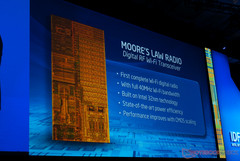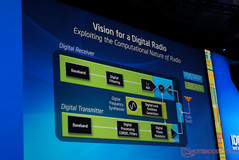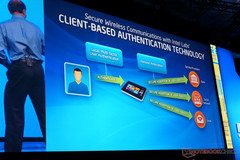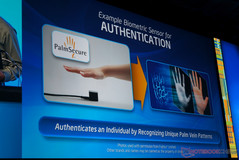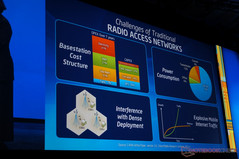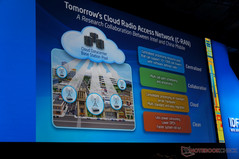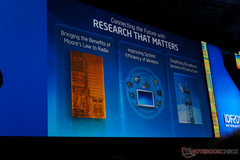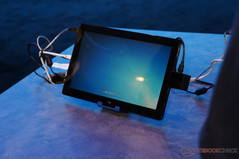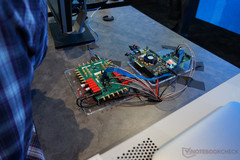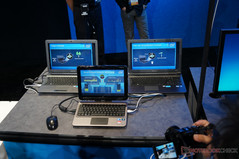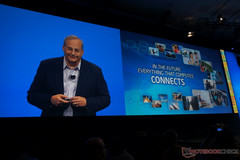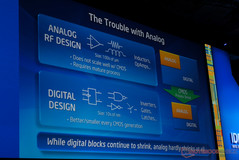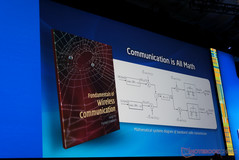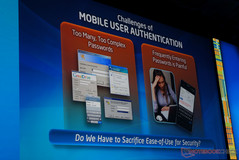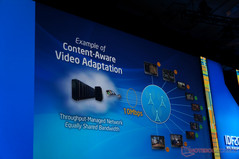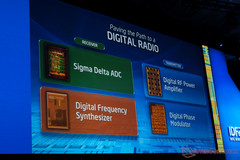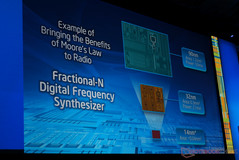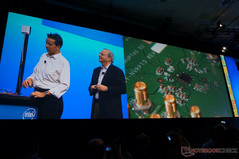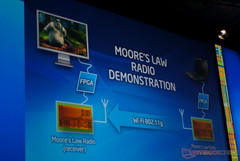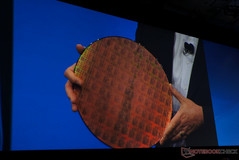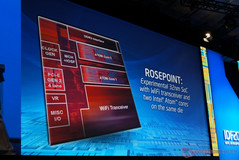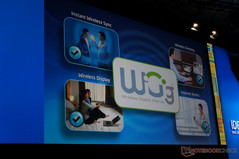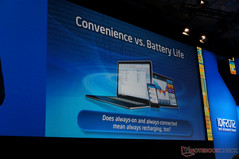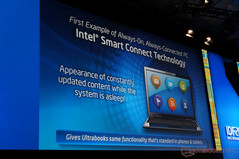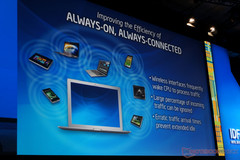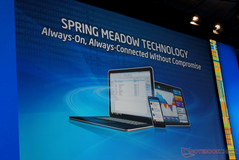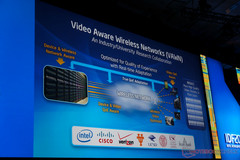IDF 2012 is in high gear here in San Francisco and Intel's 3rd keynote address revolved around the "Wireless World". Getting things started, Intel CTO, Justin Rattner, showed a clip from IDF 2002 where it was predicted that every CPU would come with a built-in radio. Rattner went on to explain that this goal had been difficult to achieve due to the analog nature of radios and the difficulties that arise when attempting to scale them with digital technology. Thankfully, Intel appears to have solved these issues, as they showed off a prototype 32nm chip that features a dual-core Atom CPU, as well as an integrated radio.
The keynote then went on to address the wireless spectrum of things, and talked about Intel's WiGig (Wireless Gigabit Alliance). This wireless standard is intended to help synchronize different devices that are used daily, using a wireless dock to connect TV displays, internet access and various other devices. While the alliance is expected to work in the 60GHz range in order to minimize interference, it should also be backwards compatible with current networks and will be available sometime next year.
Continuing the networking theme, Intel's Video Aware Wireless Network (VAWN) was also touched upon, promising to deliver unprecedented network optimization. Developed in conjunction with Cisco, Verizon and multiple universities, the software helps streamline bandwidth so that numerous users can perform network heavy tasks without infringing on each other.
Last but not least, Intel touched upon online security since most users are content with a few, easily remembered passwords instead of multinumeric security. As such, Intel displayed a technology that authenticates all sites based on a simple biometric wave of the hand in front of a tablet camera. In addition to reducing fingerprint smudges, the device's accelerometer automatically detects when its not in use and inactivates the authentication, further reducing security risks.
Source(s)
Notebookcheck.com




